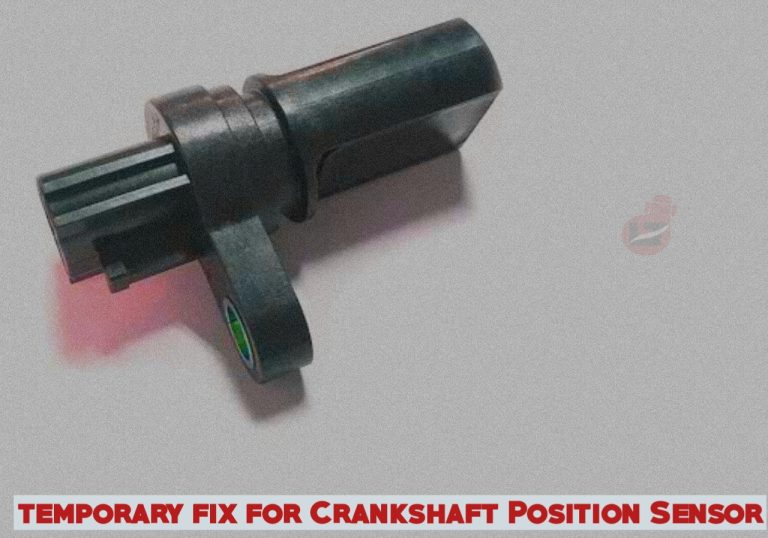A crankshaft position sensor is an electrical component that sends information about the crankshaft’s position to the ECU.
When a crankshaft position goes bad, it can cause degraded engine performance, misfiring, stalling, reduced fuel mileage, and illuminated check engine lights.
So, to save yourself from all this stress, you must get a replacement as soon as possible once the sensor goes bad.
However, is there a temporary Fix for a bad crankshaft position sensor? Seeing that it’s a crucial component that aids synchronization in internal combustion engines.
The quick answer is NO; there’s no temporary Fix for a bad crankshaft position sensor. The component should be at its best performance at all times, and if there happens to be any defect, it should be replaced instantly.
In this article, we will discuss the function of the crankshaft position sensor and also learn if there’s a temporary Fix for a damaged crankshaft sensor.
What is a Crankshaft Position Sensor
The sensor relays a component’s position or relational speed to the engine computer, which will use the information to regulate the car’s performance.
In this case, the crankshaft position sensor forwards information regarding the crankshaft’s position to the engine control unit, which regulates the ignition timing and fuel injection.
The crankshaft position sensor is an essential component in internal combustion engines. It works in harmony with the camshaft sensor to ensure the engine systems function properly.
The crankshaft position sensor is usually located on the crank pulley or the flywheel in the engine bay area.
You can check your manufacturer guide or seek the help of a mechanic to sort out where the crankshaft sensor is located on your vehicle.
Bad Crankshaft Position Sensor – Symptoms
You’ll notice one or more of the below symptoms if your crankshaft sensor goes bad.
- Illuminated check engine light
- Reduced fuel efficiency
- Engine Misfire
- Engine shuddering
- Unresponsive engine
- Stalling
- Engine Failure
Temporary Fix for Crankshaft Position Sensor
As said at the beginning of this post, there’s no temporary Fix for a damaged Crankshaft Position Sensor.
Your crankshaft sensor will be replaced once you notice the abovementioned symptoms.
Although, there are troubleshooting techniques you could try before concluding that the crankshaft is no longer functional.
You can try cleaning the sensor and its surroundings to check if the wiring and connections remain intact.
You can also try clearing the error codes on your computer system and see if that’s where the problem is coming from.
However, you are advised to install a new crankshaft sensor and reset the ECU to collect information from the newly installed position sensor.
Fortunately, replacing a crankshaft position sensor can be a cheap and fast process.
The error code associated with a faulty crankshaft position sensor is called the P0340 code.
FAQs
Can you start a car without a crankshaft position sensor?
The car engine won’t respond without the crankshaft position sensor. The camshaft and crankshaft sensors are the two most essential sensors in internal combustion engines.
What happens if you drive without a crankshaft position sensor?
When you drive without a crankshaft sensor, you’ll experience decreased fuel mileage, stalling, misfiring, engine failure, and an illuminated check engine light.
What happens if the crank sensor is not working?
If the crank sensor stops working, the ECU won’t be able to inject fuel or cause a spark that will ignite the engine.
What can damage a crank sensor?
Debris accumulation, wiring issues, physical impact, and excess heat can damage a crank sensor.
How can I tell if a crankshaft sensor is gone?
You’ll notice one or more of the below symptoms if your crankshaft sensor is gone.
- Illuminated check engine light
- Reduced fuel efficiency
- Engine Misfire
- Engine shuddering
- Unresponsive engine
- Stalling
- Engine Failure
How do you reset a crankshaft position sensor?
You can reset a crankshaft position sensor by connecting an OBD-II scanner to your car diagnostic port and taping the reset option.
As an Amazon Service LLC Program Associate, V. Auto Basics earns from qualifying purchases. See Our Affiliate disclaimer.
